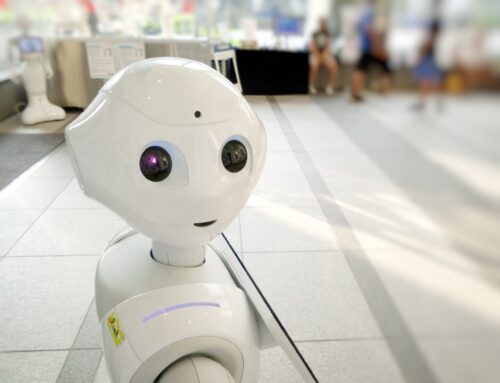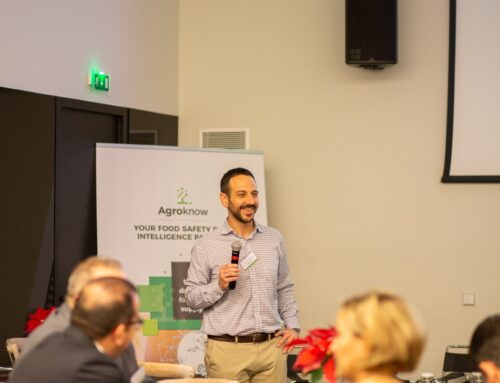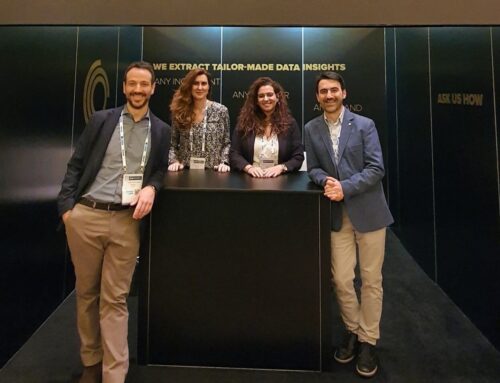
It was a pleasure to talk to Eline Chivot from the Center for Data Innovation. Her questions focused a lot on how data innovation drives food and agricultural innovation, as well as the business challenges that data innovation can respond to. It was an opportunity to describe how our data platform helps the agri-food industry inform and optimize its decision-making processes about food safety monitoring and risk prevention.
This is a copy of the interview which has been originally published at the web site of the Center for Data Innovation.
What made you interested in using data for agriculture?
I always wanted to find ways in which my work could support and empower people that work on some of the grand challenges that our planet is facing. In 2005, a professor of viticulture at the Agricultural University of Athens, who had devoted more than 40 years to research some of the world’s most ancient grape varieties, said to me:
“We are producing all this information. We are overwhelmed by the volume and variety of all our data. Is there a way in which technology can help us?”
This got me into doing a PhD on agricultural information management. And three years later, Agroknow was born. We have been working on collecting, translating, and enriching food and agriculture data from around the world since then. We believe that our work goes beyond making profit or simply making a good living. It is about making this world a better place.
How can data drive agricultural innovation, and which problems can it solve?
There are so many aspects of the agri-food industry that require data: improving yield, optimizing the manufacturing process, improving quality and safety, and increasing sales. These days, there is the technology and there are devices to collect a plethora of data from different stages of the supply chain.
Starting from the field, one can collect soil, trial, health, protection, and phenotyping data for the plant and crop. There is also genetic data for both seed and plant, environmental data from sensors, and image data collected by drones and satellites. Until the product arrives on the plate of the consumer, a wealth of more data is generated—related to its origin, nutritional info, logistics, certificates, processing, marketing, sales, and more.
The data available for each product is abundant; it is also very heterogeneous and dynamic. As new devices are being used throughout the process, the amount of data is also expected to rapidly increase. A number of questions then arise:
- How can one make sense of this data?
- Which are the critical decisions of the supply chain stakeholders that can be supported using this data?
- How may we extract insights that can inform and empower the people making these decisions?
Agricultural data remains sparse, and poorly covered, but with over 10 million farms in Europe, how can agriculture and food researchers make sense and use of so much data from so many different sources?
I believe that it is going to be all about adopting similar or interoperable data standards. Sparsity is going to become less an issue, as there are several policies that enable the transition of this traditional industry in a quite decisive manner.
For instance, European initiatives such as the digital single market and the Public Sector Information (PSI) directive will completely change the environment in which agriculture and food enterprises operate, especially in research. There is also a significant investment in digital tools and infrastructures that can facilitate storage, management, and discovery of data.
A major challenge that I see is exploring ways in which the creation of a trustworthy and transparent data exchange environment may be enabled; this requires clear incentives and legal terms, compliance to specifications and standards, as well as capabilities to localize and expand data platforms.
An important step will be to go beyond existing isolated activities and demonstration exercises. We need a fabric of interoperable and interplaying digital infrastructures that will make data sharing and exchange as natural to us as it is to use the road or rail infrastructure to move from one country to another.
Agroknow developed FOODAKAI, an intelligent online system which analyzes food incidents. Which technologies do you apply, and how can the food industry use the insights they generate?
FOODAKAI is an enterprise software platform that collects, translates, and enriches global food safety data in order to extract tailor-made insights for the global supply chain. We continuously monitor announcements from over 50 governmental agencies and inspection authorities around the world to discover if a food product recall or other safety incident has been announced.
As this information is originally published in various languages and in different formats, we also apply highly sophisticated big data integration and natural language processing algorithms to create a well-structured, high-quality and very comprehensive database of food safety incidents.
This is an extremely valuable resource when we want to provide to our food industry clients tailor-made data insights and analytics about their supply chain. Using risk assessment models, we can also calculate a risk estimation about a particular supplier or ingredient.
We also apply carefully tested machine learning algorithms to this historical database, in order to predict with higher confidence the next type of incident our clients should expect, as well as the possibility of emerging food safety risks in their supply chain. In this way, we enable companies to make food safety decisions with confidence.
What is the next step that you wish to accomplish with Agroknow? And how will technology continue to transform your sector?
I have a wonderful motto for this: “In 10 years I would really like to see all food and agriculture data to be interconnected.” At Agroknow, we truly share the belief that if we can create an interoperable, shared global data space, we can really propel the food industry forward.
Information will become available to all actors producing innovation. Analytical and decision making tools will be able to incorporate a greater abundance of data sources. The digital economy will bloom, with an abundance of online services and applications that will be able to use machine readable, interoperable, and often publicly shared data from all around the world.
We still miss the necessary infrastructure components, including technology, people, policy, and business ones, that can seamlessly integrate all the data platforms and make them work together. The sector seems to be taking tremendous steps, but for the time being we are building huge data silos. Our food supply chains are globalized; our data supply chains should also be. This is our vision for the future.
As published in datainnovation.org



